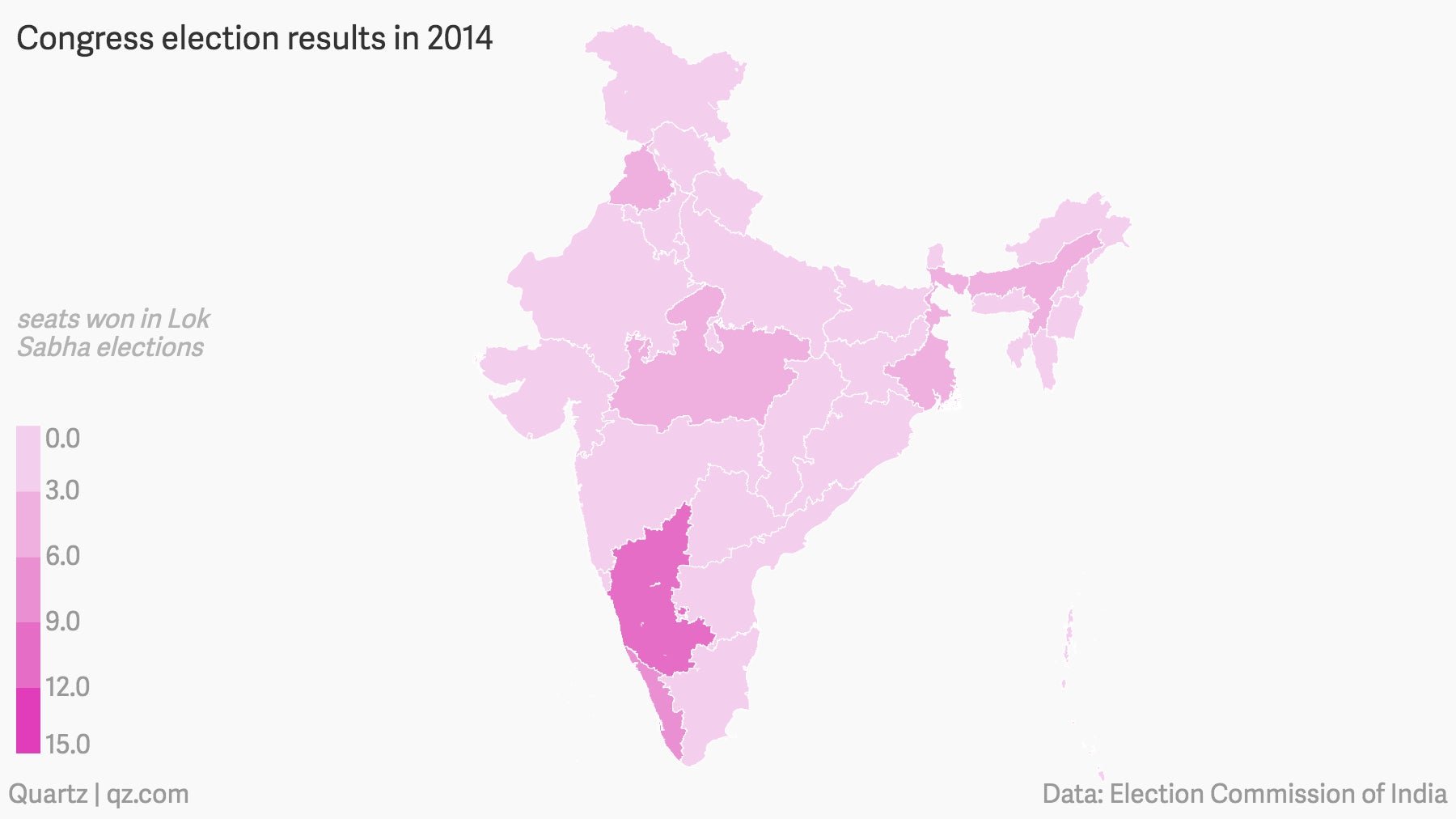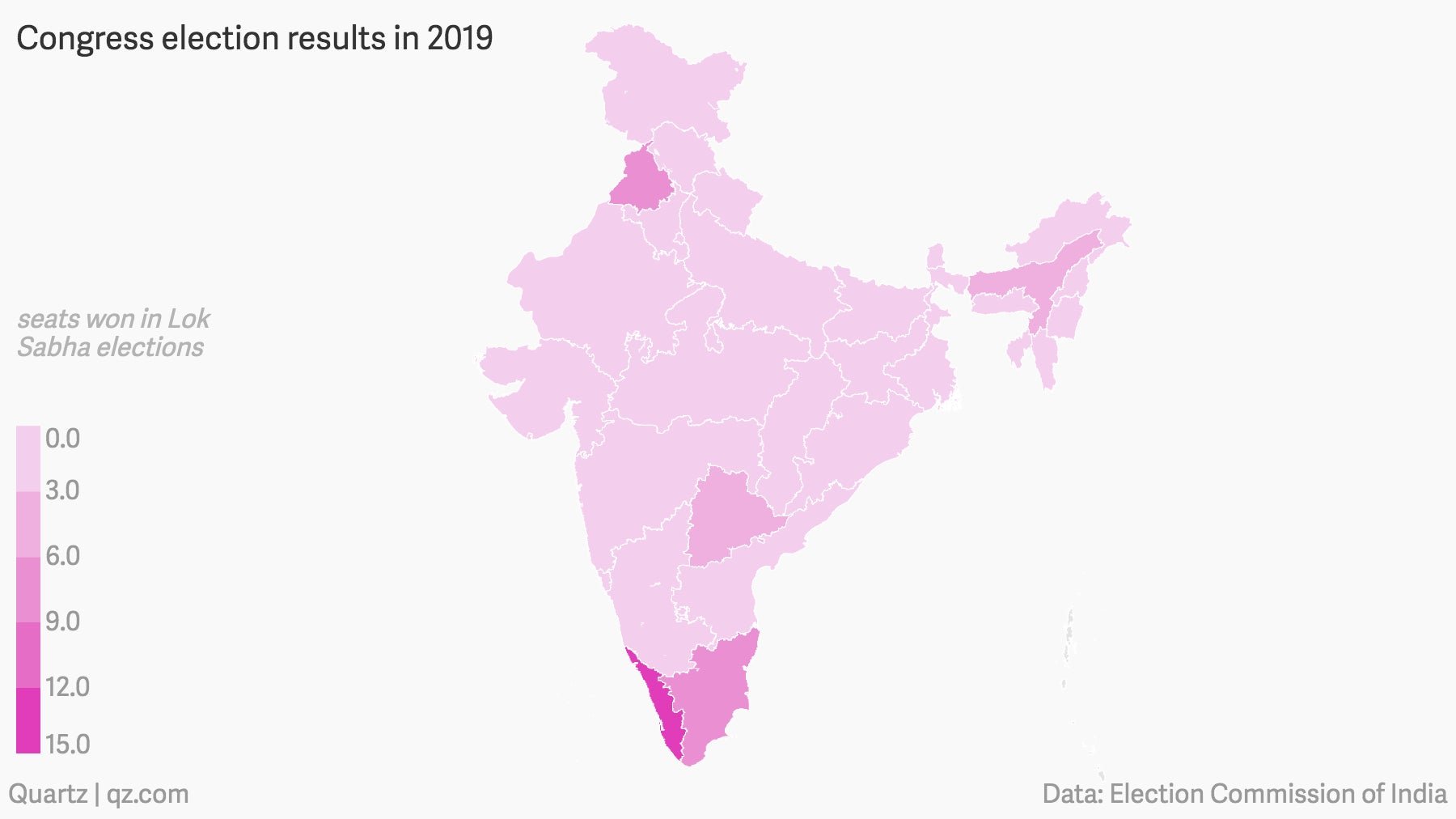Mapped: How India voted in 2014 and 2019
It’s curtains for the world’s largest election. India’s ruling Bharatiya Janata Party (BJP), led by prime minister Narendra Modi, has clinched a second straight sweeping victory, securing 303 of the 543 parliamentary seats. Its principal rival, the Indian National Congress (INC), won only 52.
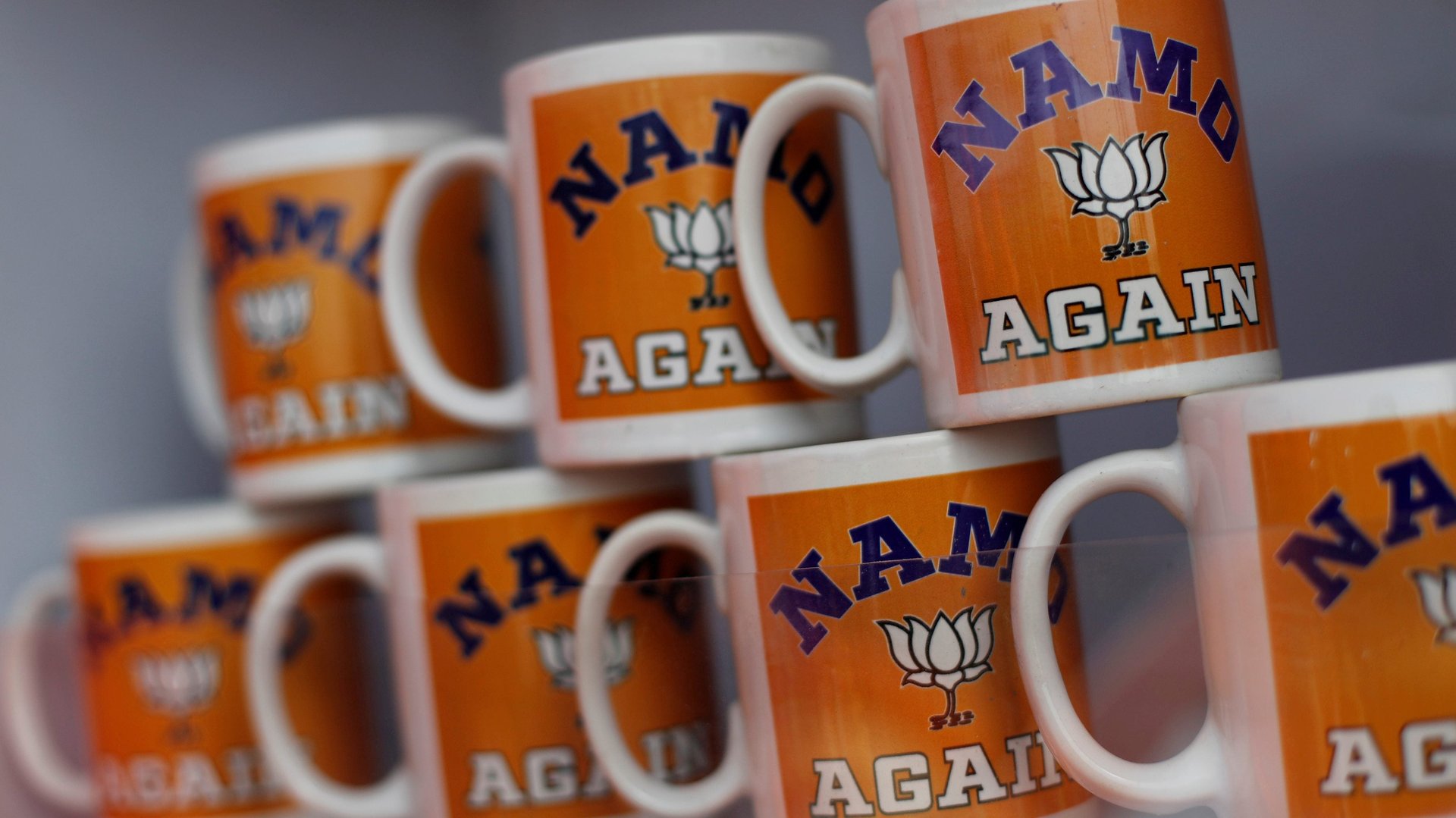

It’s curtains for the world’s largest election. India’s ruling Bharatiya Janata Party (BJP), led by prime minister Narendra Modi, has clinched a second straight sweeping victory, securing 303 of the 543 parliamentary seats. Its principal rival, the Indian National Congress (INC), won only 52.
The BJP’s campaign had run into a number of obstacles, including a backlash against religious bigotry, the hangover from demonetisation, and the lingering spectre of unemployment.
Ultimately it triumphed, even strengthening its hold on its key support base.
BJP’s India
Support for the BJP this year came from India’s western and central belts, just as it did in 2014, data from the election commission of India (ECI) show.
Despite the Congress winning assembly elections in the three Hindi heartland states—Rajasthan, Chhattisgarh, Madhya Pradesh—just five months ago, the BJP was able to swing voters in its favour by the national elections.
Speculation was rife that India’s most populous state, a key reason for the BJP’s 2014 win, would turn out to be a downer this time. The party would lose almost 40 of the 80 seats in Uttar Pradesh, some predicted. The party ended up cornering 62.
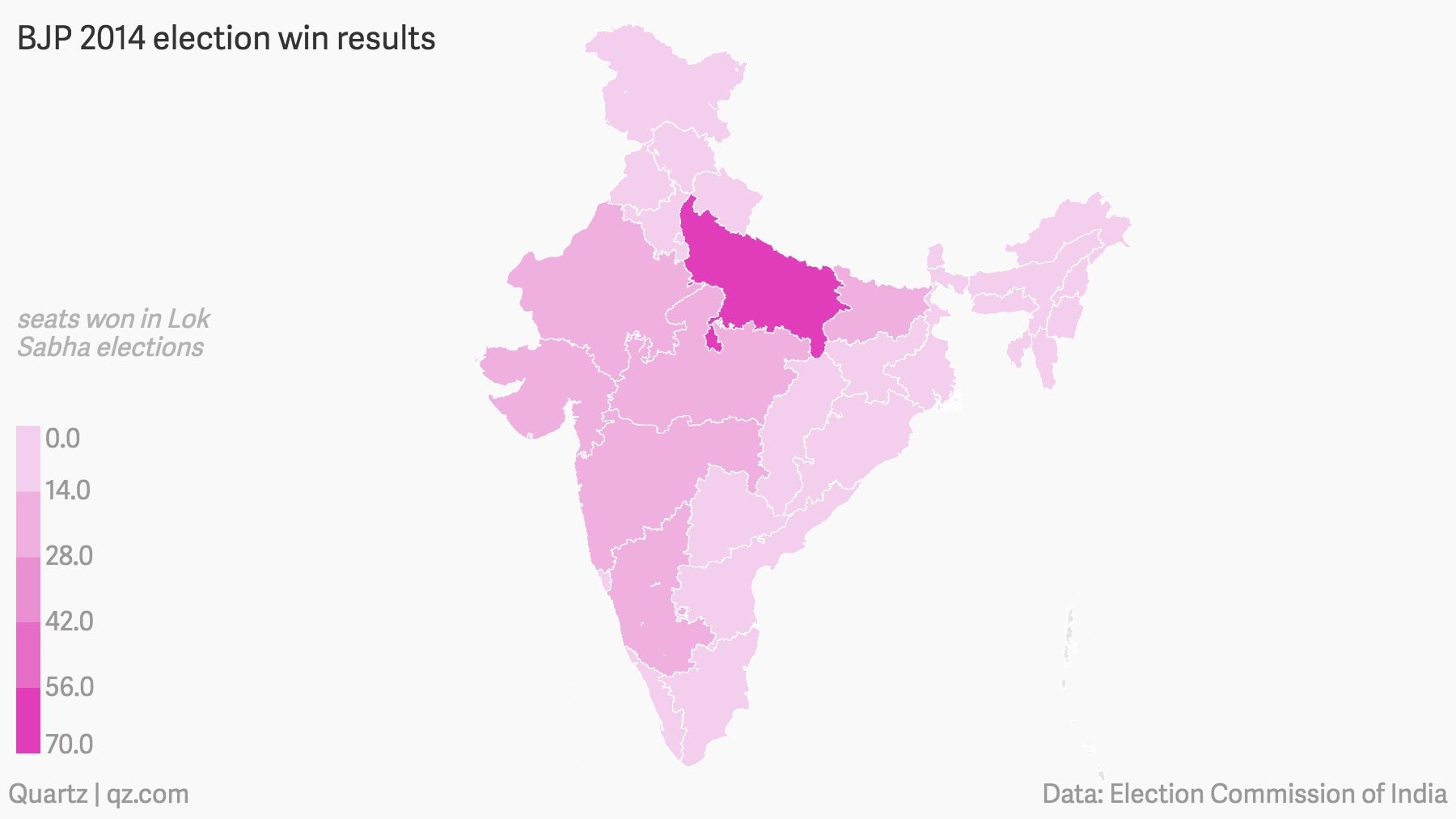
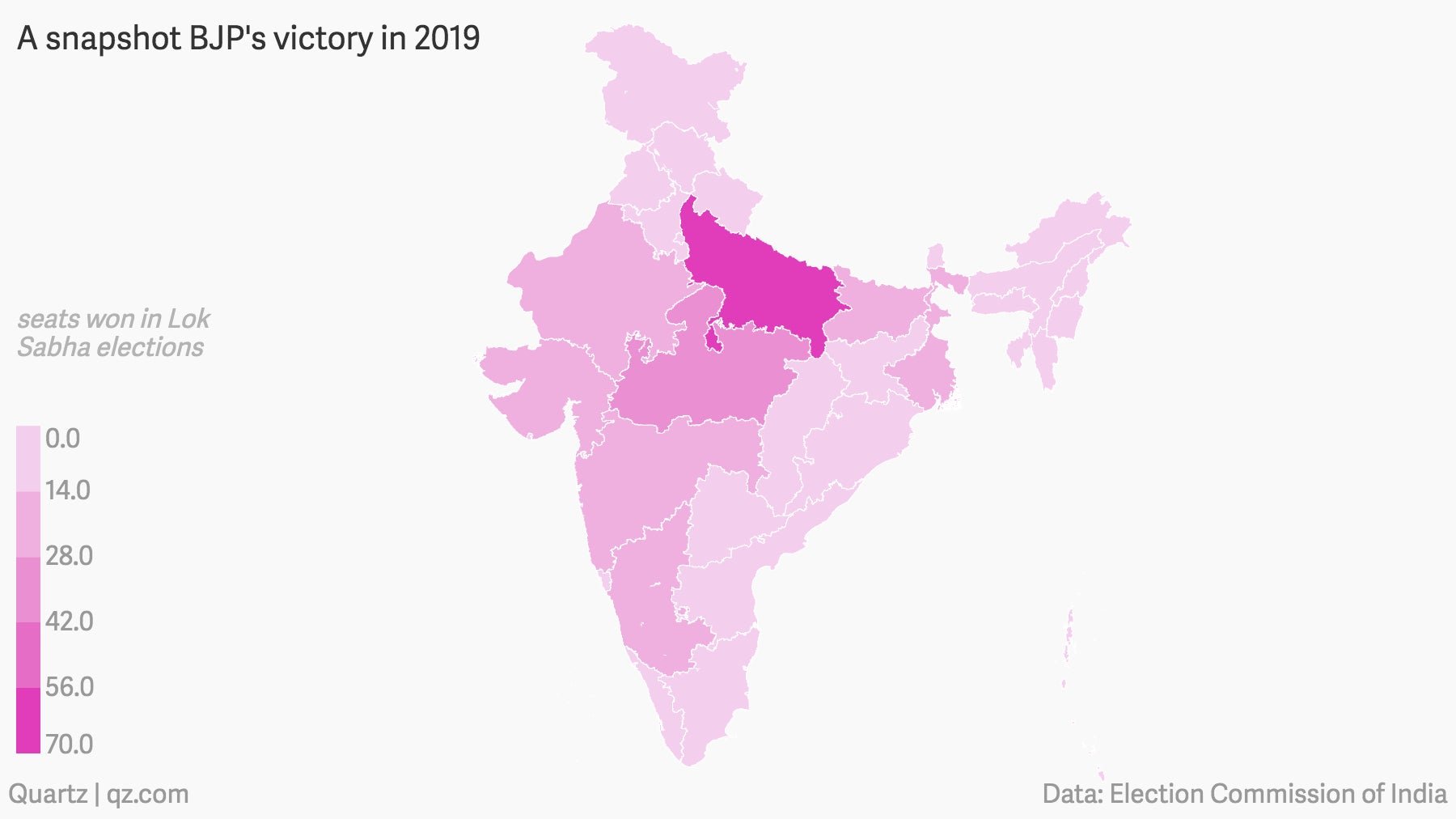
In the eastern state of West Bengal, the BJP bettered its tally from a mere two seats in 2014 to a massive 18 this year.
Congress’ India
The Congress trailed far behind the BJP, not even making a dent in 17 states and union territories. However, it made some strides in the south, courtesy the region’s distaste for the BJP.
The Hindu nationalist party is oft perceived as a north Indian party with little local connect down south. In Kerala and Tamil Nadu, the Congress’s vote share rose in 2019, compared with 2014.
However, the party led by Gandhi has been totally rebuffed by Karnataka. In a dismal showing, it got just one seat this time, as against the 10 five years earlier.
